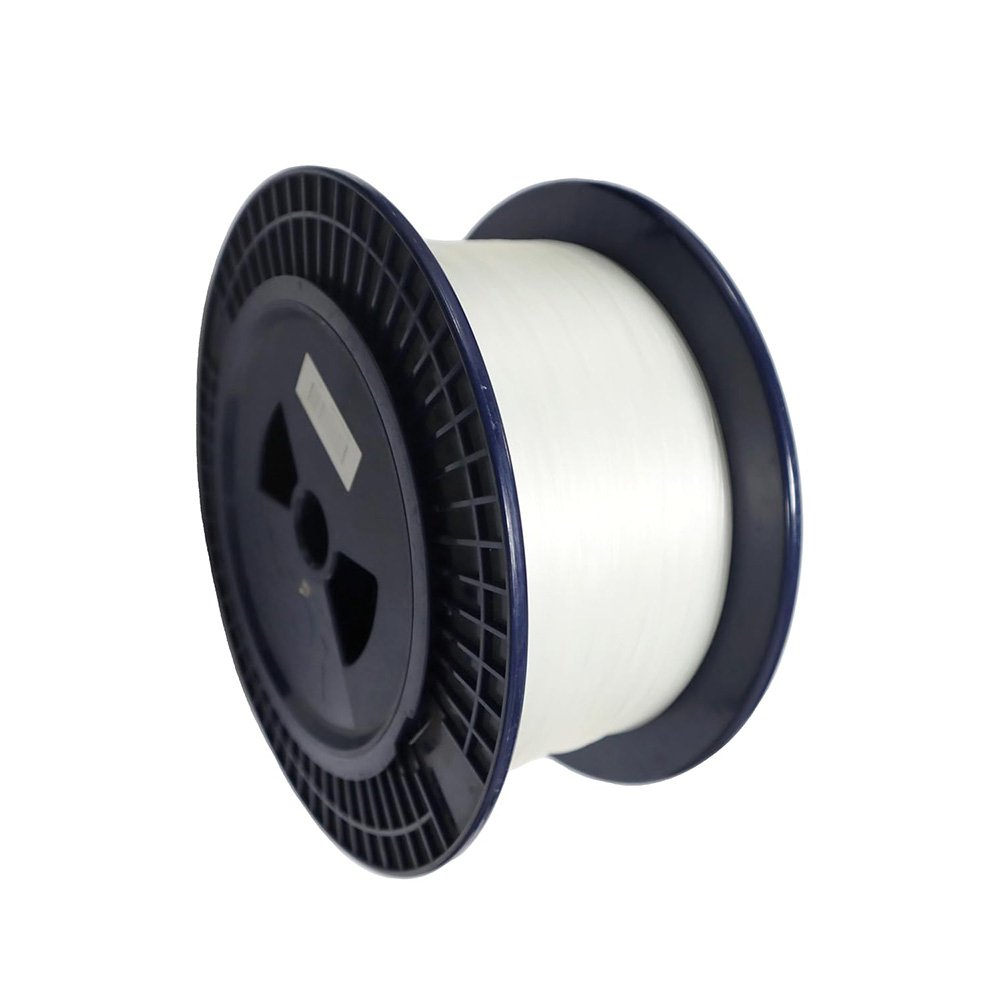- +1 (510) 365-3338
- +1 5103653338
- evan@commmesh.com
- +86 15274842581
You need top-tier internet speed without those ugly cables, right? Our Invisible Fiber Optic Cable provides a solution. This cable utilizes a 0.9 mm tight buffer. Expect data transfer rates reaching 40 Gbps. We employ a single-mode G.657.B3 fiber core, ensuring minimal loss.
It operates at a wavelength of 1625 nm. A special transparent Fluorinated Ethylene Propylene jacket encases it. The core diameter is 9 µm, with an outer diameter of 2.0 mm. Its cladding measures 125 µm.
This product features a tensile strength of 60 Newtons. You will find connectors are LC/APC types. It exhibits an attenuation of 0.21 dB/km. The minimum bend radius is 7.5 mm.
Also, it functions optimally between -40°C and +85°C. The numerical aperture is 0.14. Its jacket is LSZH-compliant. Last but not least, it can support 100 GHz bandwidth.
This Invisible Fiber Optic Cable employs the advanced G.657.B3 fiber standard. Efficient signal propagation is enabled by its core with a size of 9 µm. You get 1625 nm wavelength operation.
This cable is classified as dispersion-unshifted. Cladding diameter stands at 125 µm. The effective group index is 1.4682. A mode field diameter is 6.3 µm. Zero dispersion wavelength comes in at 1312 nm.
The polarization mode dispersion is 0.04 ps/sqrt(km). Also, cutoff wavelength hits 1250 nm. The cable’s core concentricity error is a mere 0.3 µm. It showcases a macrobend loss less than 0.03 dB at 15 mm radius.
Our Invisible Fiber Optic Cable has a specialized polymer coating. You’ll notice a Polyvinylidene Fluoride layer. A 250 µm thick coating improves durability. The material has a refractive index of 1.42, to aid in light guidance. Thermal expansion coefficient stays at 140 ppm/°C.
The coating shows a tensile modulus of 1.2 GPa. Its elongation at break hits 50%. Its maximum operating temperature is 150°C. A glass transition temperature is -35°C. Moisture absorption rate is just 0.04%.
UV resistance features a Delta E less than 2.0 after 1000 hours. Coating concentricity error is under 5 µm. It boasts an abrasion resistance of 5000 cycles.
Invisible Fiber Optic Cable utilizes an optimized refractive index profile. The core’s refractive index is precisely 1.468. You will find the cladding index at 1.462, ensuring total internal reflection.
0.36% is the difference, or delta. This profile features a step-index design. It operates at a cut-off wavelength of 1260 nm. The numerical aperture measures 0.12.
Also, its mode field diameter is 9.2 µm at 1310 nm. Dispersion slope registers at 0.085 ps/(nm^2km). Its chromatic dispersion coefficient is 3.5 ps/(nmkm) at 1550 nm. This fiber supports a single mode of propagation.
CommMesh’s Invisible Fiber Optic Cable incorporates features that reduce microbending loss. The acrylate buffer material has a Young’s modulus of 2.5 MPa. This 250 µm buffer layer provides cushion. You will observe a Poisson’s ratio of 0.45. Microbend sensitivity is minimized at 0.5 dB/km per µm.
The coating’s hardness measures 80 Shore D. Its thermal conductivity is 0.2 W/(mK). It has a 1.5 J/(gK) specific capacity. Its density comes in at 1.2 g/cm^3. Flexural strength is 50 MPa. A critical bending radius is 5 mm. It supports bend angles up to 90 degrees. Your data remains secure due to an induced attenuation less than 0.1 dB.

| Feature | Specification | Details | Performance | Standard | Material | Installation |
| Fiber Type | SMF | G.657.A2/A1 | High Bandwidth | ITU-T G.657 | Silica Glass | FTTH Ready |
| Core Ø | 8-10 µm | Single Path | Low Signal Loss | IEC 60793 | High Purity Silica | Low Bend Sensitivity |
| Cladding Ø | 125 µm | Total Internal Reflection | Long Reach | TIA-568 | Fluorine-Doped Silica | Walls/Ceilings |
| Buffer Ø | 250/900 µm | Tight Buffer | Dispersion 0.2ps/nm/km | IEC 60794 | Acrylate Polymer | Adhesive Backing |
| Jacket | Transparent | LSZH, FEP, PVDF | 0.2-0.4 dB/km Loss | RoHS, REACH | FEP, PVDF, PU | No Damage Surface |
| Wavelength | 1310/1550 nm | Telecom Windows | Long Haul Data | Telcordia GR | UV-Stable Compound | Indoor Use |
| Connector | SC/APC, LC/APC, FC/APC | Low Back Reflection | 10 – 100 Gbps | ANSI | Ceramic Ferrule | Easy Connect |
This fiber optic cable employs an advanced fluoropolymer jacket with a 1.42 refractive index, closely matching its internal core-cladding boundary. Fresnel reflection is minimized with this design typically below 0.5%. This engineering provides signal integrity through back reflections lower than -60 dB. Further, the specific material choice supports an operational bandwidth encompassing the O-band, E-band, S-band, C-band, and L-band.
Our cable is characterized by a loss figure of 0.35 dB/km at 1310 nm. At 1550 nm, it demonstrates a value of 0.21 dB/km. These results are due to its ultra-pure fused silica composition. This material features an OH- ion concentration below 1 part per million.
The external sheath material exhibits light transmittance above 95% across visible wavelengths. Its haze value is measured under 1% per ASTM D1003 standards. A special extrusion process is used to achieve this high level of transparency, with a consistent material density to avoid micro-voids that may cause light to scatter, and thus preserve aesthetics.
During manufacturing, core-to-cladding concentricity error is controlled below 0.5 µm. This precision facilitates splice loss figures consistently under 0.05 dB when utilizing fusion splicing techniques. The Invisible Fiber Optic Cable has precise core alignment. This is another key parameter when maintaining an optimal optical time-domain reflectometer (OTDR) trace. Connector return loss values exceed 60 dB, when terminated with angle-polished connectors (APC).
Quick Contact
To save your time, please contact us quickly via the form below to get an instant quote.
